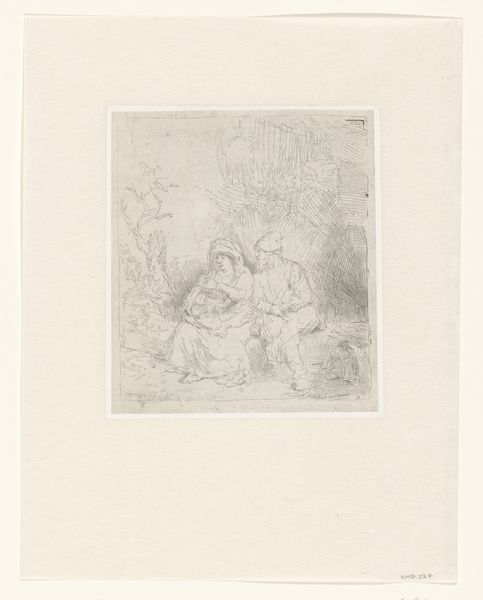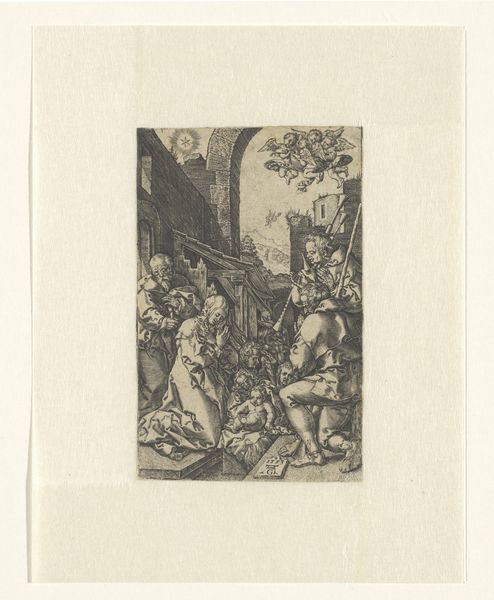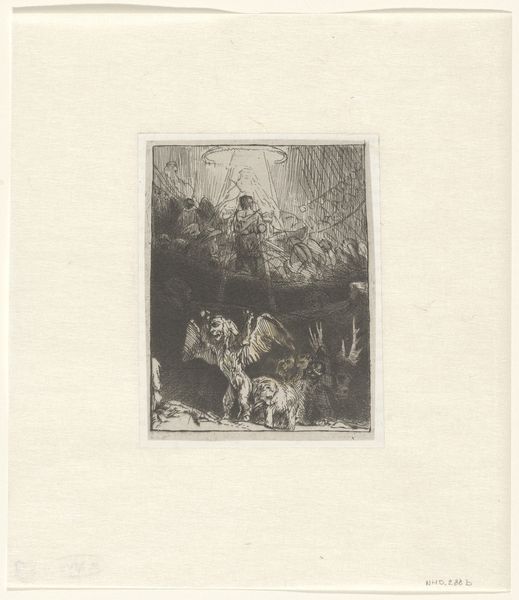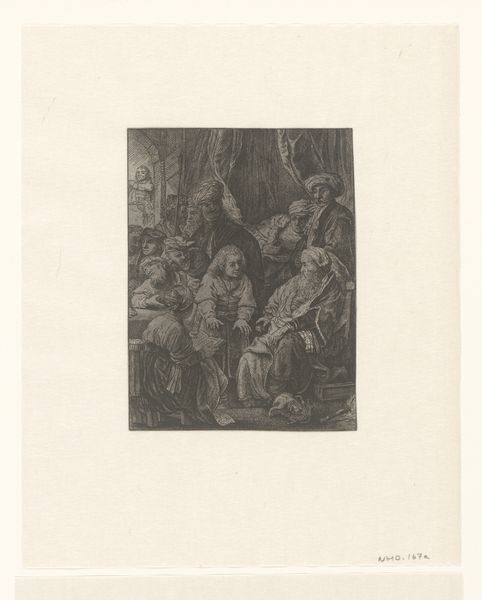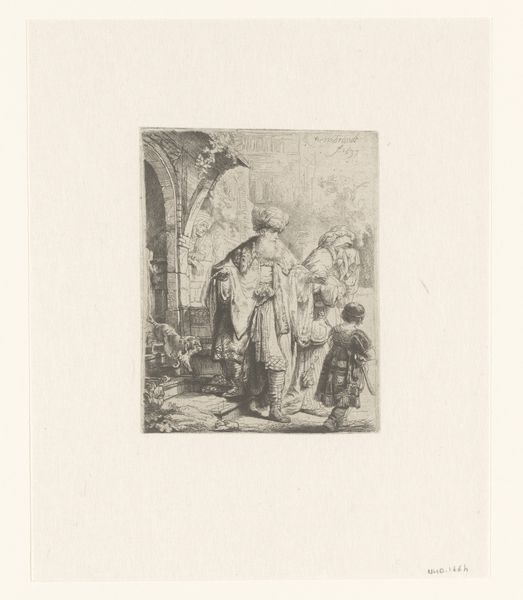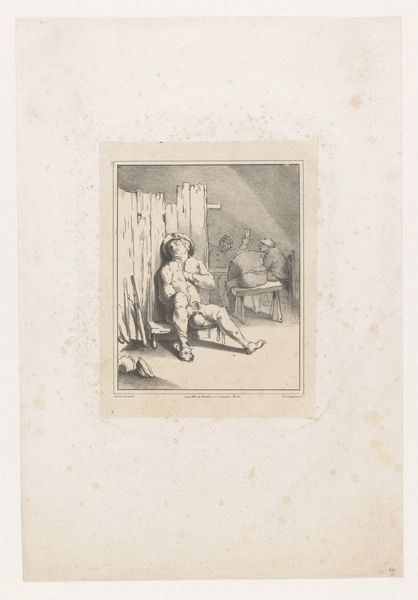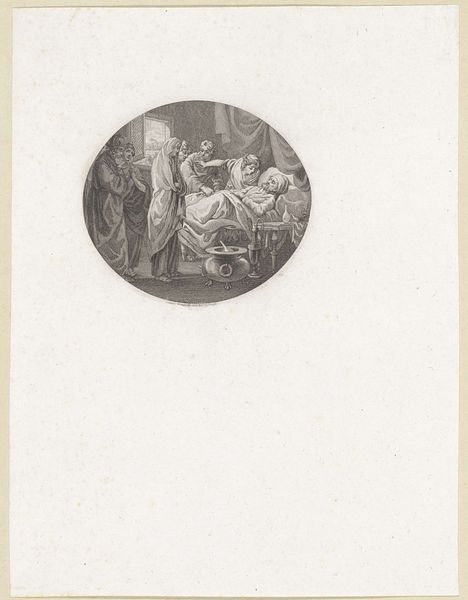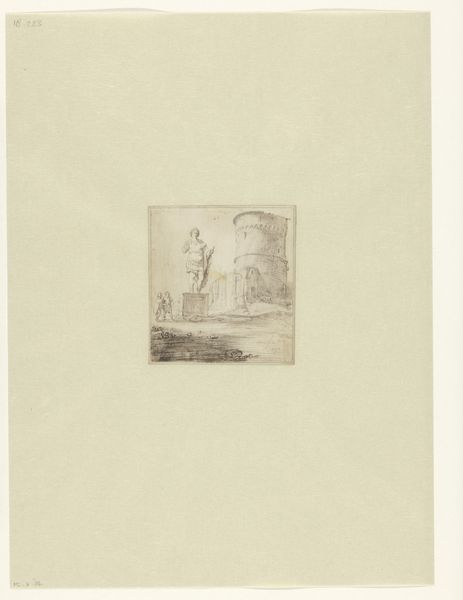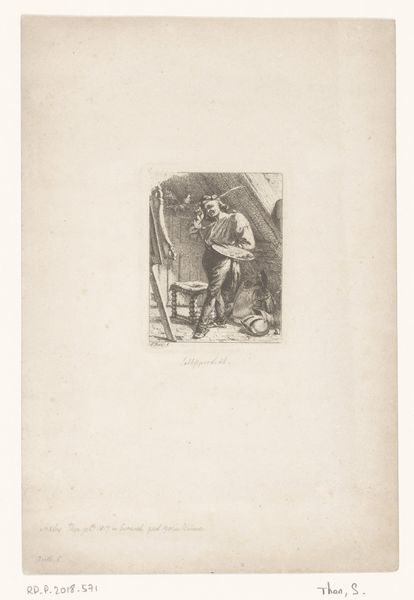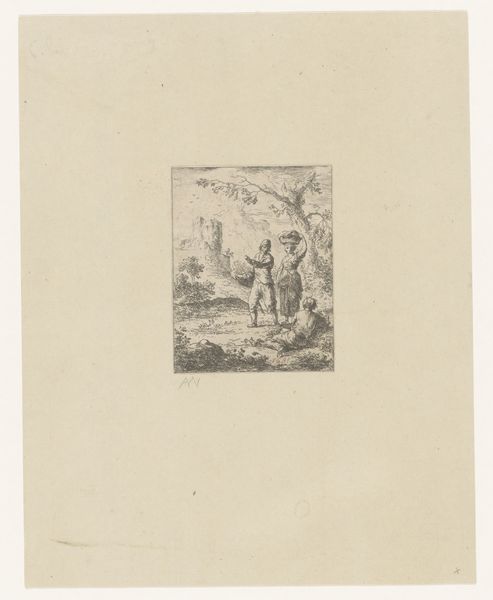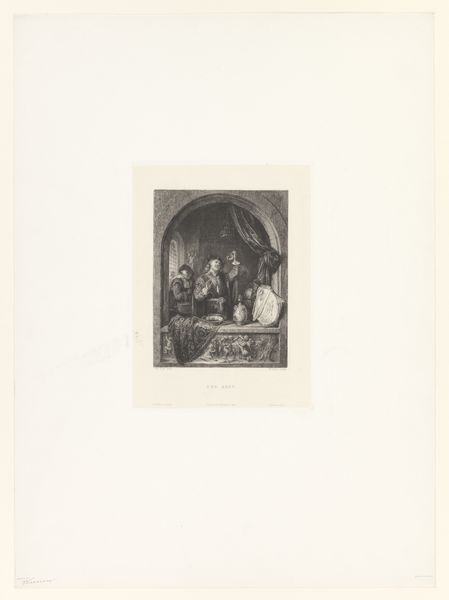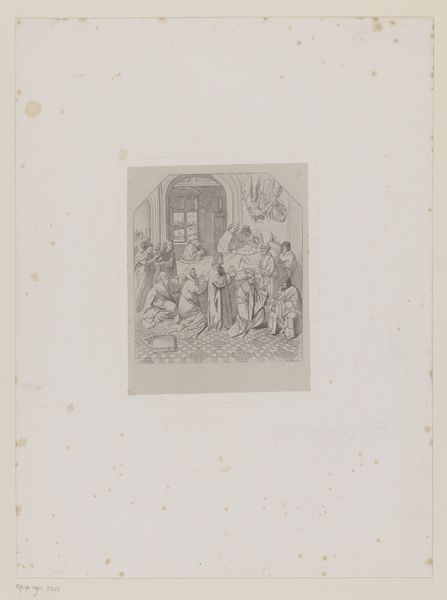
drawing, paper, ink
#
drawing
#
narrative-art
#
baroque
#
light coloured
#
paper
#
ink
#
genre-painting
Dimensions: height 110 mm, width 67 mm
Copyright: Rijks Museum: Open Domain
Curator: Before us is Samuel van Hoogstraten's drawing, "Christ Blessing the Children," created sometime between 1646 and 1650, and held at the Rijksmuseum. It's executed in ink on paper. Editor: It has a charming quality despite the limited tonal range. The figures, clustered around what appears to be Christ, are rendered with an economy of line that still conveys a sense of depth and emotion. Curator: Indeed. Considering Hoogstraten’s social circles, being part of the Rembrandt workshop, one can assume how artistic mentorships shaped not just his own style but broader understandings of imagery and their social functions. These mentorships provided spaces that allow a student to refine their abilities and develop their own personal aesthetics based on access to specific supplies or styles popular at the time. Editor: Yes, and looking closely at the medium – the ink and paper – and Hoogstraten’s masterful use of line weight and density to suggest volume and texture is quite clever, wouldn’t you agree? It is remarkable to see what someone can make from the basic elements when given proper support. He turns everyday materials into something beautiful. This access helped determine artistic quality during the baroque period! Curator: I am glad you brought up material access, how access determined status, particularly within religious circles. Here, we can imagine a patron commissioning a relatively modest work—ink on paper rather than a large, costly canvas— perhaps for private devotional use, illustrating the narrative's broad appeal at the time. Editor: Exactly, there is a connection between visual devotion and domestic life. The small scale feels so intimate. It suggests personal reflection rather than grand spectacle. What strikes me is how the very humbleness of its materials speaks to the core values the narrative seeks to promote. Curator: This piece then serves as a tangible reflection of religious narratives and broader accessibility. It underscores how the art production industry has shaped perceptions, allowing the replication of iconic themes with broad dissemination strategies that allow religious understanding on a personal scale. Editor: Examining the creation and impact of “Christ Blessing the Children” through a production scope unveils how essential artistry promotes specific imagery in domestic culture. The blending of materials, narratives, and public values is not a minor consideration when interpreting how artworks engage the community at large. Curator: What we see, I believe, goes beyond skillful usage of line and is reflective of art as an integrated piece with religious narratives. Editor: I think, too, that we touched on an example of using material modesty that reflects societal ideals regarding craft, access, and representation.
Comments
No comments
Be the first to comment and join the conversation on the ultimate creative platform.
